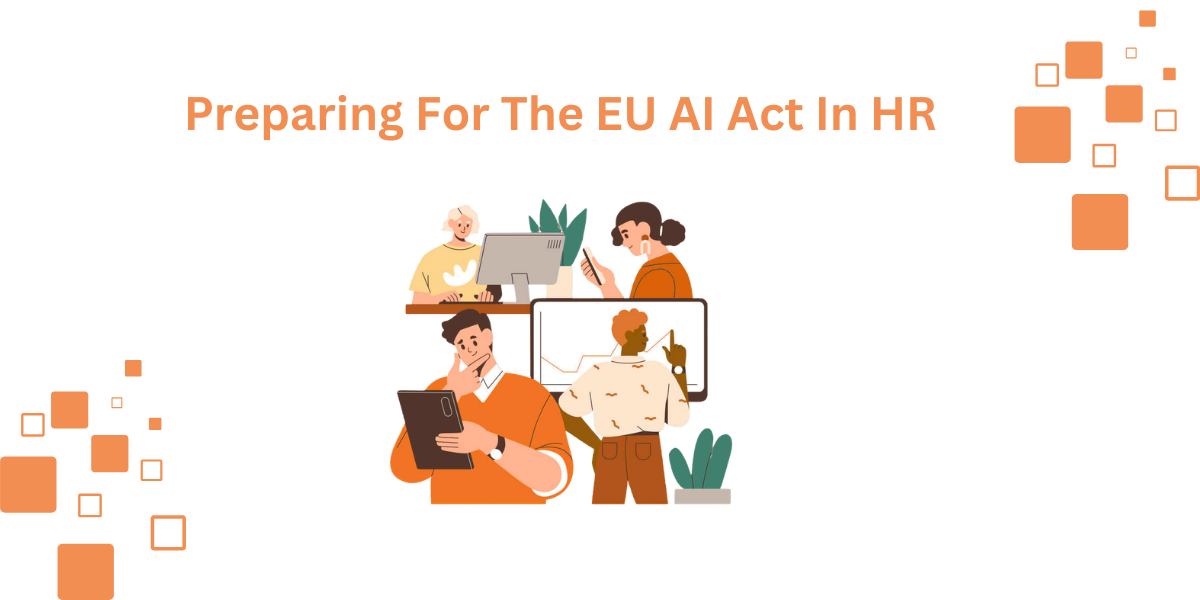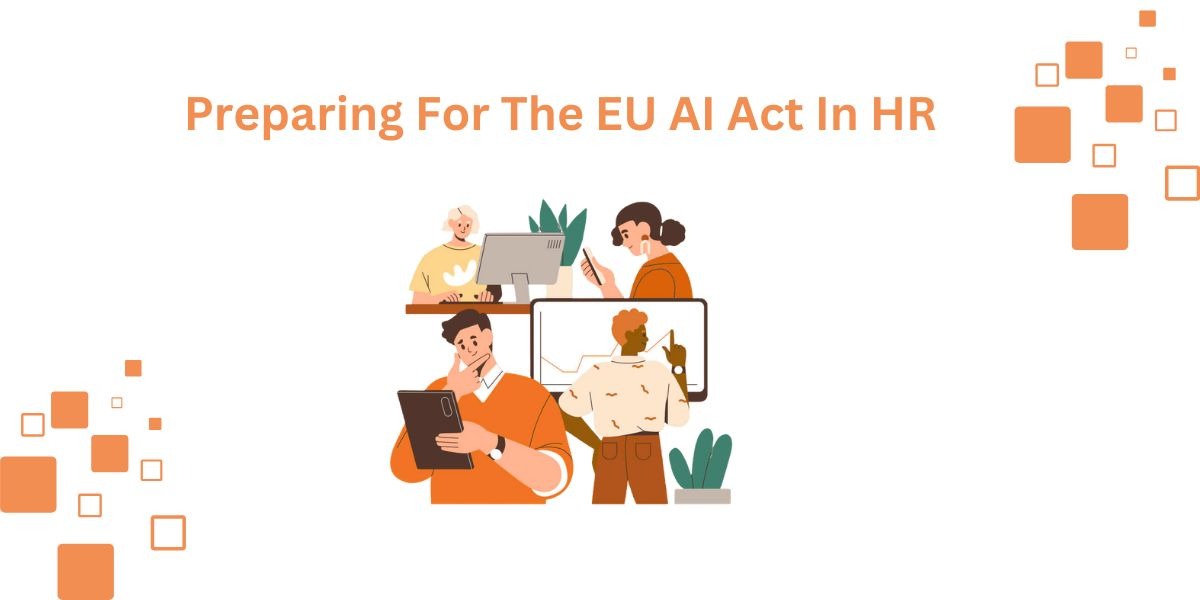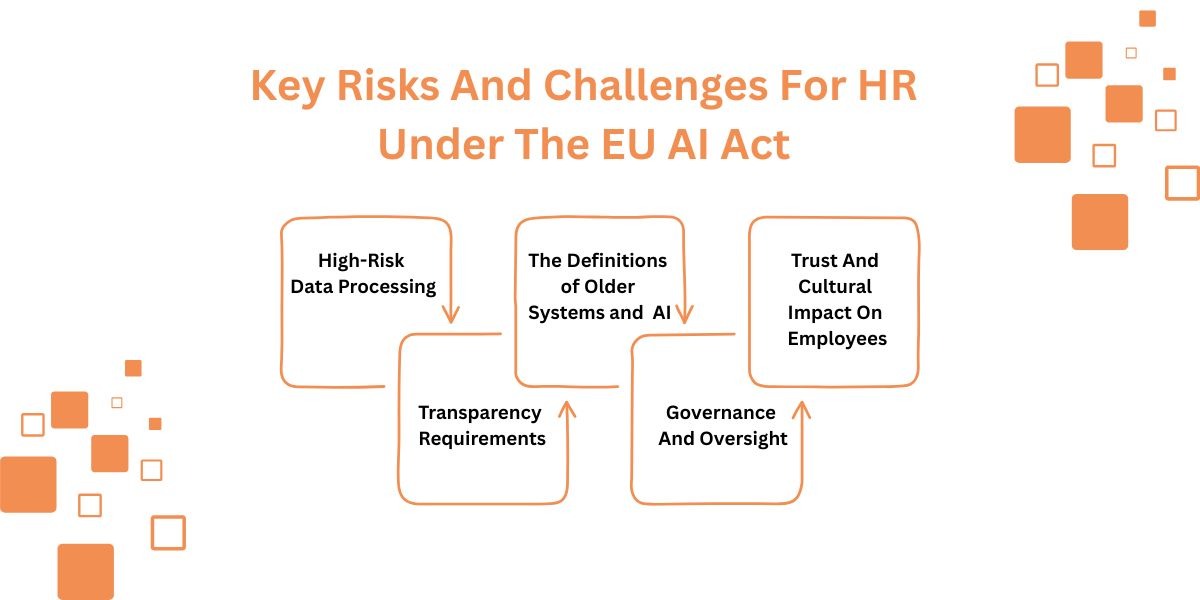What Is an HRIS (Human Resource Information System)?
Learn what an HRIS is, how it works, and why it matters. Discover its key features, benefits, and how it transforms HR operations for better efficiency.

The European Union's (EU) AI Act is scheduled to take effect in August 2025. The European Parliament refers to it as the first global law to govern artificial intelligence. This is not just a compliance update to the Human Resources (HR) leaders, Chief Information Officers (CIOs), and transformation directors. It is a turning point.
The Act has a direct effect on the systems that handle sensitive employee information. That covers platforms in recruiting, performance review tools, and staff survey analytics. Your organization will fall under the European Union (EU) scope, especially when you have clients in the European Union (EU) or even just serve European Union (EU) clients.
You need to act now. Here in this blog, we will explain the importance of the European Union (EU) AI Act to Human Resources (HR), discuss the risks that you will face, present the TRUSTED Framework, and give some practical ideas to prepare.

The Act ensures the safe and fair use of Artificial Intelligence (AI) in a manner similar to the General Data Protection Regulation (GDPR), but with an expanded scope. Human Resources (HR) systems are considered high-risk because they affect hiring and performance decisions. Fairness and ethical use of AI in the workplace require compliance.
The European Union (EU) AI Act governs the manner in which organizations plan and used to use Artificial Intelligence (AI). Its aim is clear: to ensure people have their rights, but safely and fairly, while keeping the adoption of Artificial Intelligence (AI).
Consider it the Artificial Intelligence (AI) version of the General Data Protection Regulation (GDPR). Similar to the General Data Protection Regulation (GDPR), the Act applies to non-European Union (EU)- based companies that offer services to the European Union (EU) market. But it goes further. It puts Artificial Intelligence (AI) systems at risk.
Human Resources (HR) systems are classified as being in the high-risk category. Why? They handle personal and sensitive employee information. Artificial Intelligence (AI)-based recruiting or performance software can have a direct impact on career and livelihood. That puts Human Resources (HR) on the agenda of the new law.
HR is carefully watching AI applications in employment, performance, and involvement. Major threats include the misuse of data, lack of transparency, outdated AI systems, and poor governance. Noncompliance may harm the reputation and the trust of staff members.
Human Resources (HR) teams utilize Artificial Intelligence (AI) in their recruitment, performance, and employee engagement processes. These software are sensitive tools. The Act involves highly strict checks and controls. In their absence, your organization will be exposed to legal and image risks.
Employees and applicants should be informed when Artificial Intelligence (AI) is present. If you use chatbots, automate CV screening, or conduct automated performance assessments, you should be transparent and disclose this. All decisions made by Artificial Intelligence (AI) should be properly identified.
The Act defines Artificial Intelligence (AI) widely. Any system that makes predictions or inferences using input data is covered. It implies that older tools that utilize machine learning or predictive models are also covered. Lots of organizations are at risk of not having these systems in their audits.
The Act focuses on individual rights. That makes Human Resources (HR) the center of compliance. You need to establish governance systems that uphold fairness, accountability, and transparency.
Workers have already developed sensitivity regarding the usage of their data. Mistrust can be further made worse by poor Artificial Intelligence (AI) governance. Transparent practices, on the other hand, can foster confidence and a positive culture.

The TRUSTED Framework helps leaders in HR departments to change compliance into opportunity. To promote the responsible and ethical use of AI, it outlines seven pillars: Technology, Regulation, Usability, Security, Transparency, Ethics, and Data.
It is not only compliance. The European Union (EU) AI Act presents Human Resources (HR) leaders with an opportunity to be at the forefront of Artificial Intelligence (AI) transformation. The TRUSTED Framework by LACE Partners helps you prepare and establish trust with your employees.
This model will see you go beyond compliance. You also make Human Resources (HR) a pioneer in the ethical and effective adoption of Artificial Intelligence (AI).
HR is recommended to establish AI governance boards, conduct audits of available AI tools, and align AI priorities with business objectives. They should also be prepared to conduct impact assessments and consult with professionals to maintain sustainable compliance.
Begin by creating a team that includes representatives from Human Resources (HR), Information Technology (IT), compliance, and legal. The risks associated with Artificial Intelligence (AI) need to be managed through collective responsibility and accountability.
Make a complete list of Artificial Intelligence (AI) tools in action. Consider recruitment, engagement, training, and performance systems. Evaluate present risks and future compliance needs.
Do not do compliance as a one-time thing. Support the Artificial Intelligence (AI) strategy in alignment with business objectives. Add upskilling, governance systems, and ethical policies.
These are assessments that you will have to perform. They go beyond paperwork. They demonstrate that your Artificial Intelligence (AI) systems prioritize fairness, safety, and transparency.
It might be that you lack the skills internally. Collaborate with companies such as LACE Partners. They can assist you in creating compliance processes as you work on strategy and culture.

The EU AI Act places HR as a leader in making ethical AI change. In addition to compliance, HR can foster organizational trust, transparency, and innovation, thereby shaping the future of work in a responsible manner.
The European Union (EU) AI Act provides a new purpose for Human Resources (HR). You are no longer data custodians. You are change leaders.
In the right way, compliance is a business opportunity. When you incorporate transparency, ethics, and trust into your systems, you create the future of work. You are also a leader who drives Artificial Intelligence (AI) on an enterprise level.
The European Union (EU) AI Act is the world’s first law to regulate Artificial Intelligence (AI). It took effect in August 2025. The Act categorizes Human Resources (HR) systems as high-risk because they utilize sensitive employee data in hiring, performance, and engagement processes. HR leaders must ensure transparency, governance, and fairness to comply with regulations.
The TRUSTED Framework, encompassing Technology, Regulation, Usability, Security, Transparency, Ethics, and Data, helps organizations build responsible AI practices. By creating governance teams, using auditing tools, and aligning AI strategies with business goals, HR can turn compliance into an ethical leadership opportunity.
This approach allows HR to become a trusted and innovative force in the AI era.
HR needs to move quickly to implement ethical AI practices as August 2025 approaches. Compliance is not only a necessity but also an opportunity to drive change, foster trust, and gain a competitive edge.
The European Union (EU) AI Act is not merely a compliance measure; it is more a matter of shaping the future of work. Now Human Resources (HR) leaders are at the centre of this change. You may take the shortest path and check boxes, or you can be a goal-oriented leader.
Through transparency, fairness, and ethical Artificial Intelligence (AI) practices, you can become a more trusted partner to employees, facilitate business transformation, and make Human Resources (HR) a strategic force. The decision is straightforward: act now, prepare with the proper frameworks, and make compliance a continuous competitive advantage.
It is a law that governs Artificial Intelligence (AI) globally, the first of its kind. It places organizations in the responsibility of managing Artificial Intelligence (AI) responsibly, particularly in areas where Human Resources (HR) systems are considered high-risk.
Since they deal with sensitive information and make life-altering decisions (such as hiring and promotions).
Install Artificial Intelligence (AI) audit tools, organize a governance committee, perform an impact evaluation, and design an Artificial Intelligence (AI) strategy in accordance with business objectives.
It gives a framework model encompassing technology, regulation, usability, security, transparency, ethics, and data governance.
Yes. Similar to the General Data Protection Regulation (GDPR), it governs all companies that operate in or serve the European Union (EU) market.










